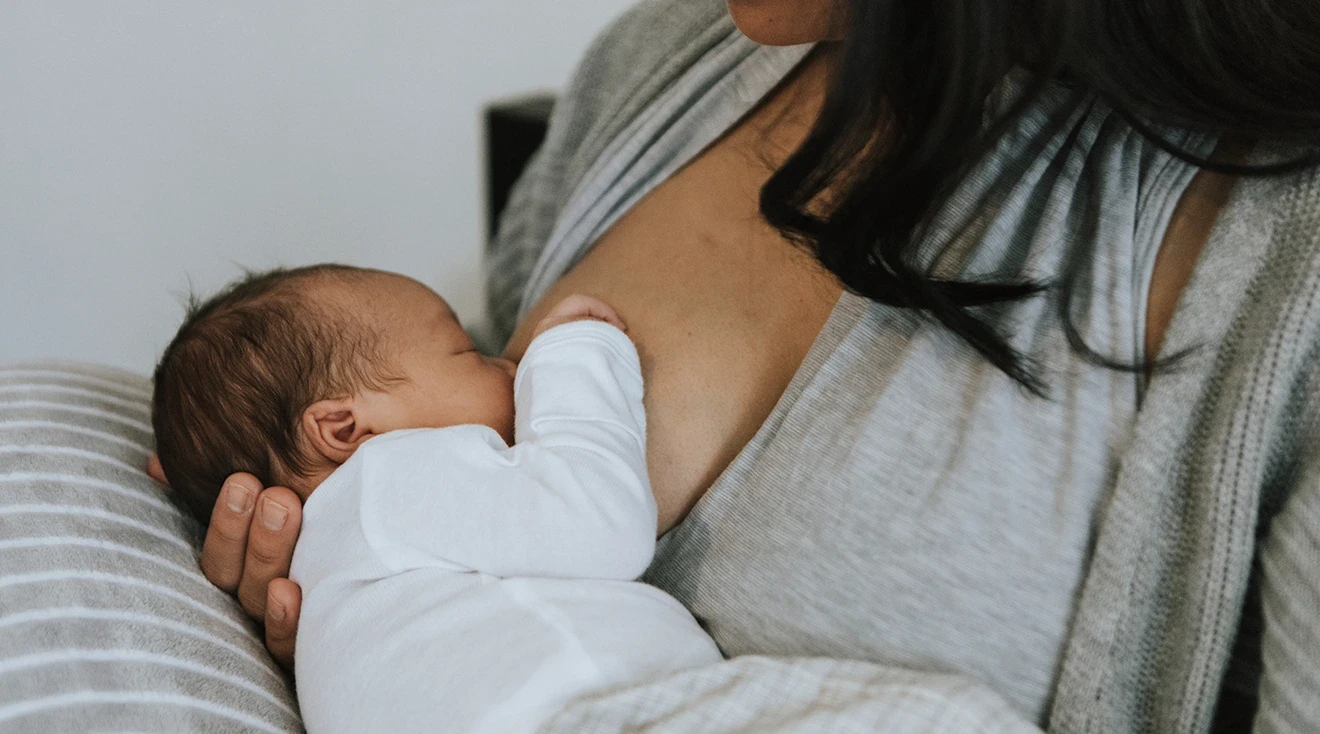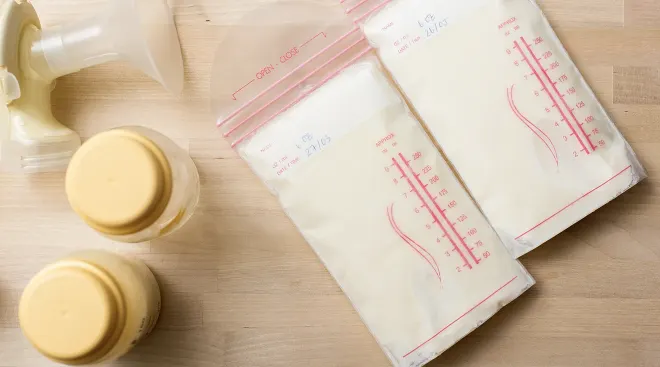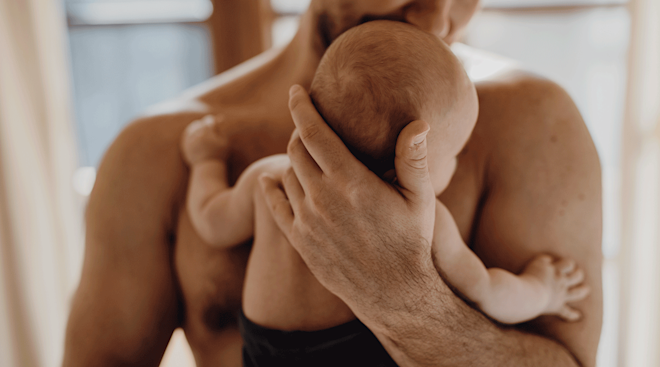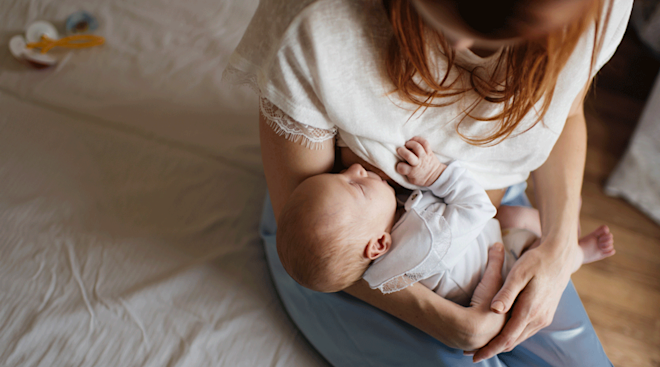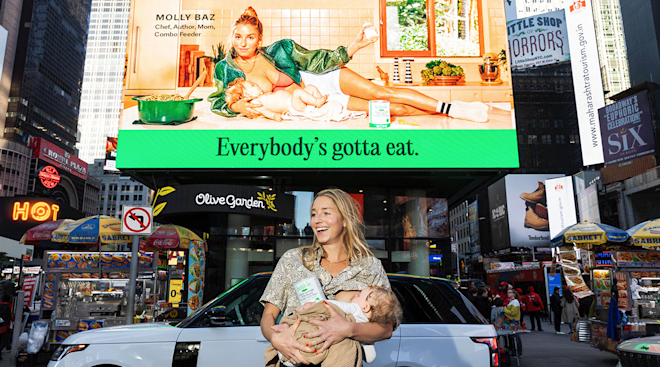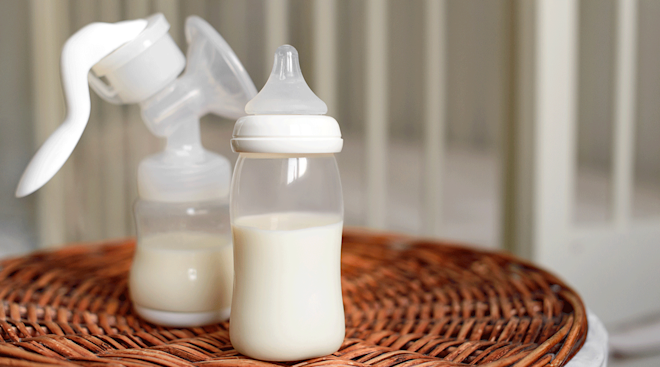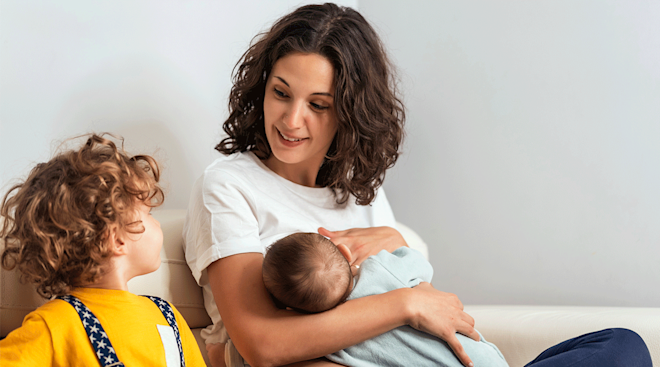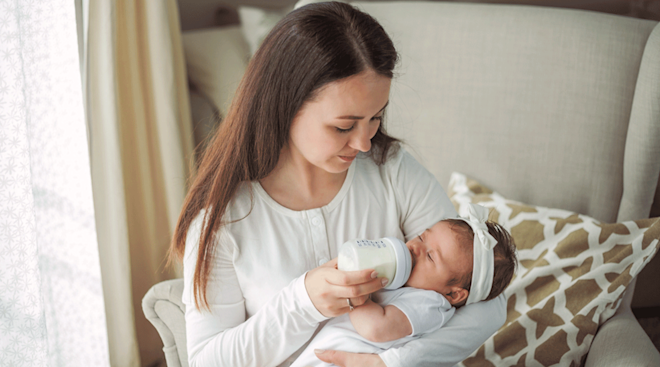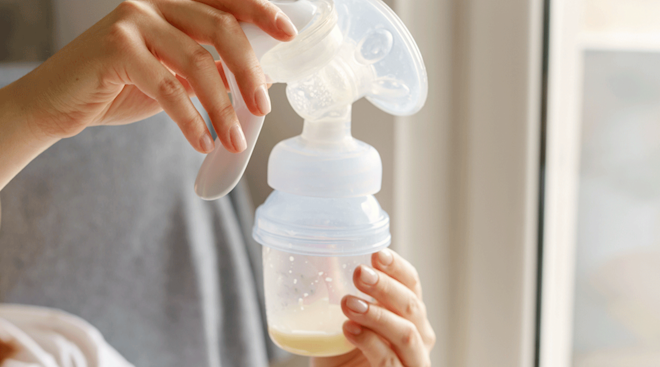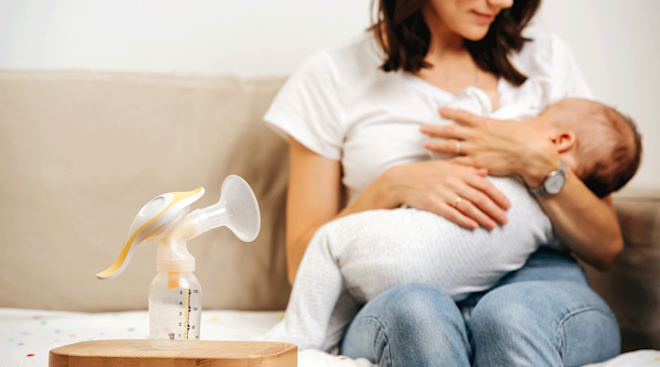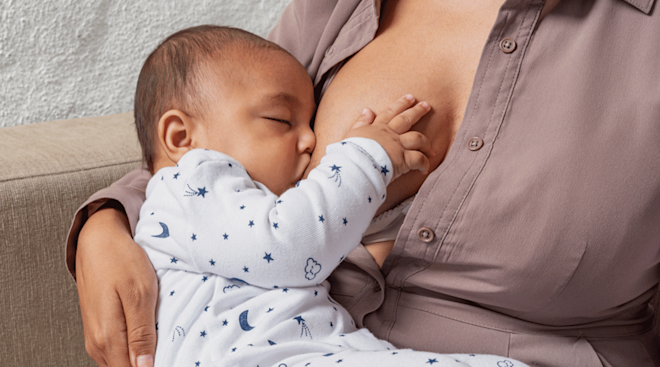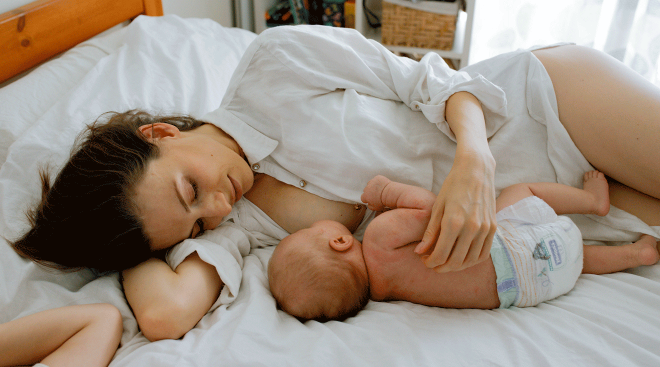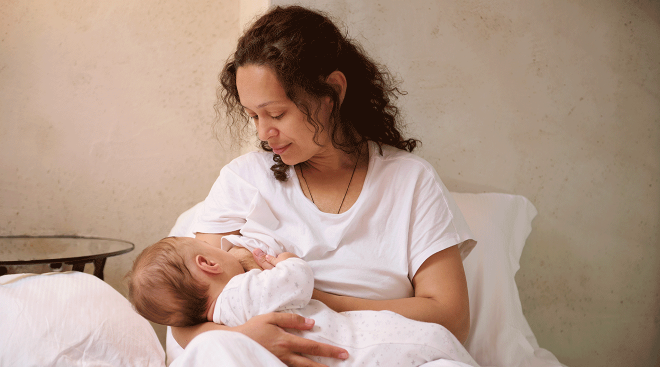What Is a Milk Bleb or Blister?
If breastfeeding isn’t exactly a smooth journey for you, you’re not alone. All types of issues big and small can crop up along the way, from clogged ducts to low milk supply. One common problem? You could get a milk bleb, or milk blister, on your nipple. These little white dots can be irritating and even painful—but thankfully, they’re treatable. So what, exactly, is a milk bleb or blister, and how do you get rid of them? Here’s the deal.
A milk bleb or milk blister can appear when a pore in your nipple is blocked by a piece of skin or small amount of hardened breast milk, notes the Cleveland Clinic. “A milk blister or ‘bleb’ is a small, usually whitish blister on the tip of the nipple,” explains Rebekah Huppert, IBCLC, RN, BSN, a lactation consultant at the Mayo Clinic. “This is different from a blood blister or other blisters that can be caused by poor latch.”
A milk blister is more than a cosmetic issue. “Due to the blockage, the milk can get backed up,” says women’s health expert Jennifer Wider, MD. This can raise your risk of developing clogged milk ducts or even mastitis, Huppert adds.
The root cause of a milk bleb or milk blister is inflammation, says Jennie Kishbaugh, RN, BSN, CBC, certified breastfeeding counselor at Corewell Health. “[This] can be caused by pressure on the breast—think tight bras, lying on your stomach, a large milk supply, issues with baby’s latch or even a yeast overgrowth called thrush.” Skin cells can build up at the end of a milk duct that’s been irritated, explains Huppert. “So if you have had some plugged ducts caused by inflammation, you could end up with a milk blister at the end of that duct line,” she says.
Leigh Anne O’Connor, IBCLC, LCCE, a New York City-based lactation consultant and La Leche League leader, says that symptoms of a milk bleb or blister can include:
- A white dot on the end of your nipple
- Pain (especially during feedings)
- Plugged milk ducts higher in the breast (due to milk backup)
“Milk blisters can definitely be painful—moms are often surprised that such a small spot can cause so much pain,” Kishbaugh says. “This pain is typically on the spot itself and the areas directly next to or even behind the spot. The breastfeeding parent may also find that the area looks enlarged or protruded after feeding or pumping.”
Milk blebs usually resolve on their own within 24 to 48 hours, according to the Cleveland Clinic. But if you have a milk bleb or blister that hasn’t resolved on its own, or the symptoms are bothering you, there are a few effective at-home treatments you can try. “The goal is to allow milk to flow through that opening without irritating the blister,” Huppert says. Options include:
- Warm compresses or soaks. These can help soften your nipples before feeding or pumping, Huppert says. “The heat and moisture should expand the skin and help to open the duct,” she says. You can also use Epsom salt to dry off the bleb.
- Exfoliating the skin. The Cleveland Clinic recommends rubbing a clean, warm washcloth over the area to help remove any skin causing the blocked pore. Make sure to do this after you’ve already applied heat and softened the skin. You can also use a grapeseed oil mixture on the area to gently exfoliate, Huppert says.
- Softening your nipple with oil. Apply olive oil to the milk bleb with a cotton ball and let it sit for 20 to 30 minutes, advises the Cleveland Clinic. Then, use a clean washcloth to exfoliate.
- Nursing or pumping. More frequent nursing or pumping can help open the blocked nipple pore.
Since milk blebs and blisters are often caused by issues with baby’s latch or milk oversupply, it could be helpful to work with a lactation consultant, says Kishbaugh. “Proper latch is key!” she says. “If baby is having issues with weight gain or Mom is having pain, I’d highly recommend in-person evaluation to check baby’s latch… Things like good hygiene, avoiding oversupply and not wearing restrictive clothing can be beneficial as well.” O’Connor also suggests having baby evaluated for oral ties, such as a tongue tie.
Again, most milk blebs do get better on their own or with at-home treatment. But Huppert says you should reach out to your provider if things don’t improve within a week or if you notice milk getting backed up behind the blister. “Providers can use a sterile needle to open the area and help milk to flow,” she says. (Don’t try this on your own—it could lead to infection.)
If you notice any signs of mastitis—including a fever, chills, tenderness or pain in the breasts—Huppert recommends giving your provider a call immediately.
While milk blebs aren’t fun, they’re usually temporary annoyances. But if it’s bothering you—or you have any questions at all—definitely reach out to a lactation consultant or doctor for personalized advice.
Please note: The Bump and the materials and information it contains are not intended to, and do not constitute, medical or other health advice or diagnosis and should not be used as such. You should always consult with a qualified physician or health professional about your specific circumstances.
Plus, more from The Bump:
Rebekah Huppert, IBCLC, RN, BSN, is a lactation consultant at the Mayo Clinic.
Jennie Kishbaugh, RN, BSN, CBC, is a certified breastfeeding counselor at Corewell Health.
Leigh Anne O’Connor, IBCLC, LCCE, is a New York City-based lactation consultant and La Leche League leader. She is a past president of the New York Lactation Consultant Association.
Jennifer Wider, MD, is a nationally renowned women’s health expert, author and radio host. She received her medical degree from the Mount Sinai School of Medicine in New York City.
Cleveland Clinic, Milk Bleb, September 2022
Navigate forward to interact with the calendar and select a date. Press the question mark key to get the keyboard shortcuts for changing dates.
































